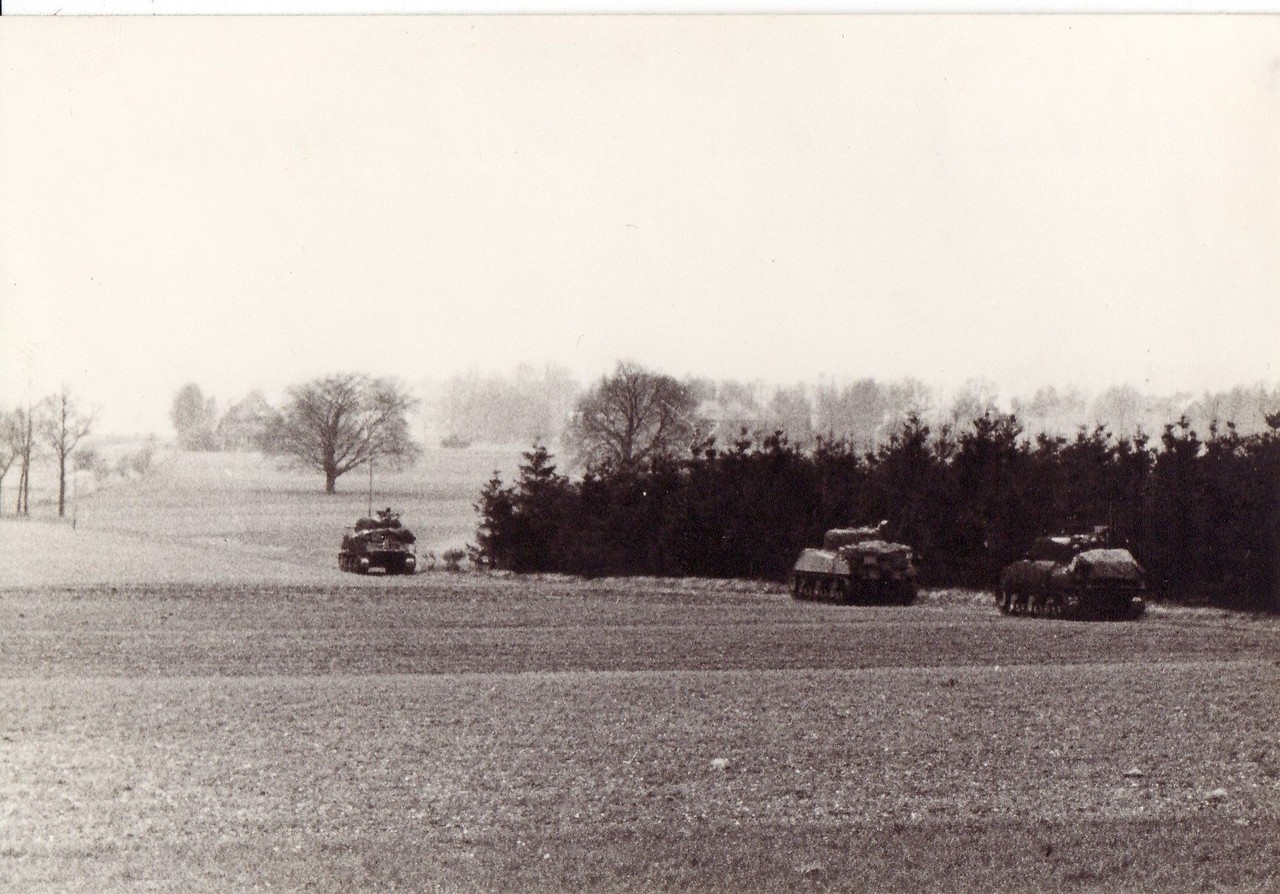It was a dangerous moment, as the three tanks were soon bombarded with mortar shells. One was hit and retreated. The other two continued the assault but were confronted by Panzerfäuste, portable German anti-tank weapons.
Panzerfaust
A Panzerfaust contains 800 grams of explosive, enough to pierce and disable a tank. One tank manages to reverse in time, but the other is hit. Four men leap from the burning turret and are shot. The driver, however, escapes uninjured, runs towards the German trenches and shoots several soldiers. Once again, the Germans quickly surrender, and the British take 100 men prisoner in one fell swoop.
Lochem is finally Liberated!
By eleven o’clock in the evening, the British were able to continue their advance. Some entered Lochem via Barchemseweg and Nieuwstad, while others reached the town centre through Berkeloord and Nieuweweg. After Lochem was liberated early on Sunday morning, the British troops were called back to Borculo, where they were finally able to rest after 72 hours of continuous fighting. They were relieved by Canadian divisions. Around 5 a.m., the first residents of Lochem emerged from their shelters, greeting the Canadians with joy and excitement. For many years, the people of Lochem believed it was the Canadians who had liberated them.
A temporary grave
Here, near the triangular grove, ten British soldiers who were killed in the Enk were buried the following day. A month later, they were reburied in Barchem cemetery. When the field of honour in Holten was established in 1946, there was a proposal to transfer their remains there. However, since the soldiers were laid to rest in consecrated ground within an official cemetery, reburial was, unfortunately, not possible.
